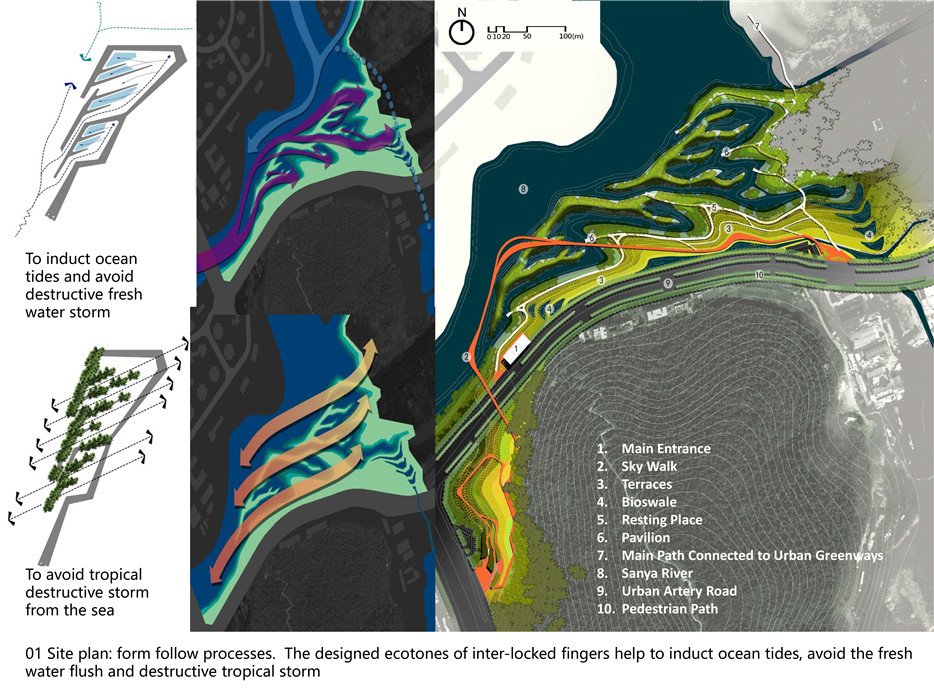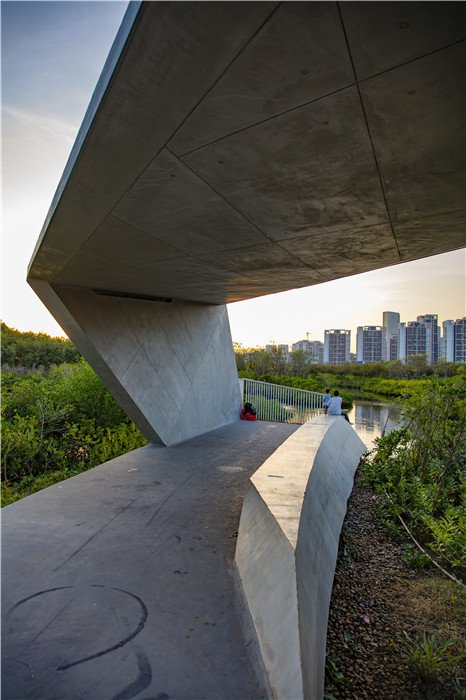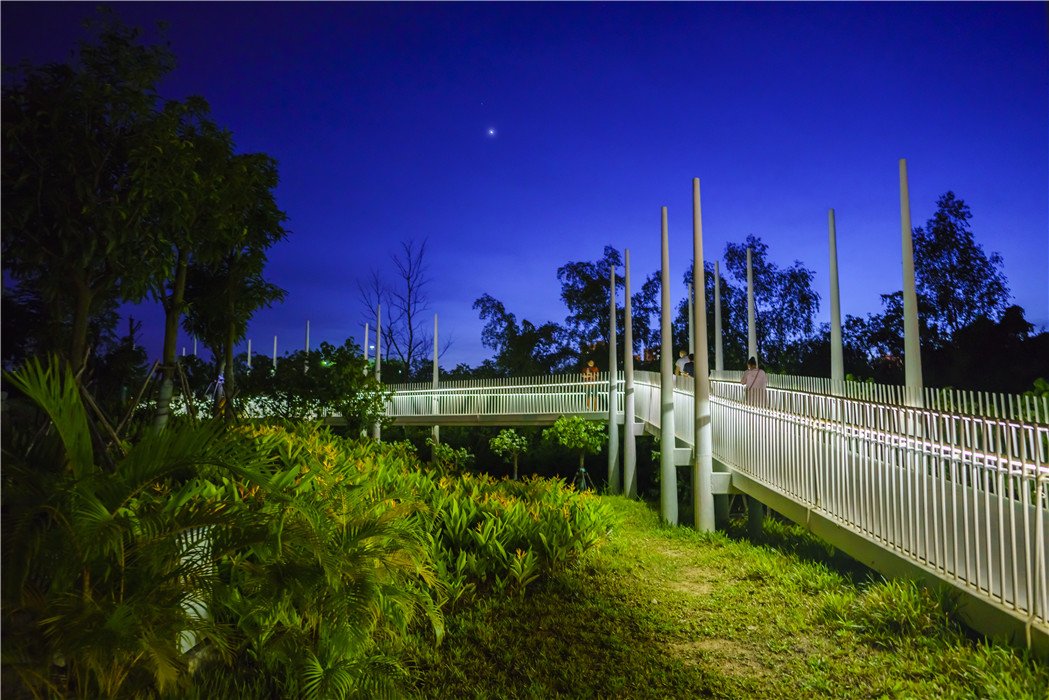Sanya Mangrove Park expands
Tomorrow is World Wetlands Day so an appropriate time to showcase Turenscape’s Sanya Mangrove Park which has added 10 hectares of restored natural environment to the bank of the Sanya River in China’s Hainan Province.
The winner of both a 2020 ASLA Honor Award for general design and a 2021 WAF Landscape Award, Turenscape’s form-following-process design strategy made use of materials on-site and took action to mitigate urban flood risk caused by climate change. It also dealt with the challenge of finding an efficient and inexpensive way to restore mangrove habitat destroyed by rapid urban development.
Turenscape’s Sanya Mangrove Park in China’s Hainan Province.
Sanya, a tropical tourist city in Hainan Island, has endured three decades of intensive development, polluting waterways and killing mangroves with concrete flood walls. In 2015, the government decided to make changes with the help of a landscape architect.
Turenscape’s objectives were to rehabilitate the mangroves and make the site, “a park showcase for citywide urban renewal and ecological recovery.”
The landform of interlocked fingers lead ocean tides into the park, avoiding the annual strong tropical storms from the sea, storm water flooding, and pollution from the upper stream that may harm establishing mangroves. It also maximises diversity and creates a dynamic aquatic environment following the tides.
Sanya Mangrove Park features a diverse range of plants including coconut trees, Areca palm, washingtonia filifera, mango trees, wampee trees, jack trees and licuala grandis.
Sanya is a tropical tourist city and has endured three decades of intensive development.
Terraces make use of the nine metre drop from urban road to water level, and integrate with bio-swales to catch and filtrate stormwater from urban pavement, while also creating public spaces at different elevations.
A network of pedestrian pathways follow the landform, and five pavilions allow visitors to enjoy views, shade, shelter and birdwatching.
An example of the elevated pathways which bring visitors from the city down to water level.
The 2020 ASLA awards jury commended the way the project, “restores previously decimated mangroves…while serving as a lush pedestrian recreation zone within high-rise city. Developers had left behind concrete retaining walls and polluted waterways, but now a thriving ecotone welcomes ocean tides with a porous edge condition that supports new mangrove growth.
Terraced landscapes and elevated pathways bring visitors from the city down to water level, and storm-resistant concrete pavilions offer protection from overhead sun and tropical rain. The mangrove rehabilitation serves as a case study of strategies to return parts of cities to nature.”



